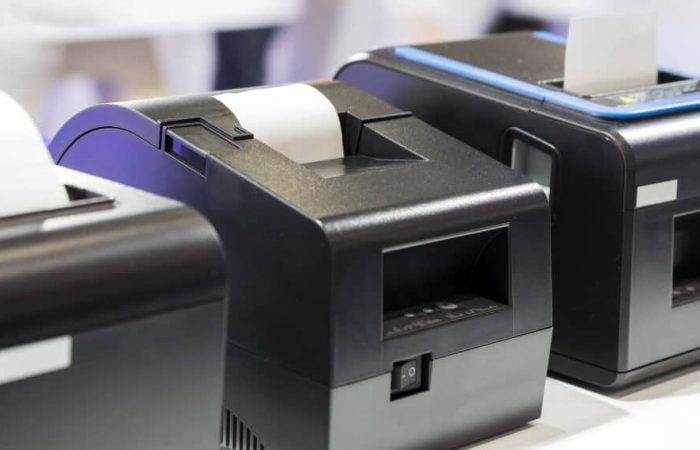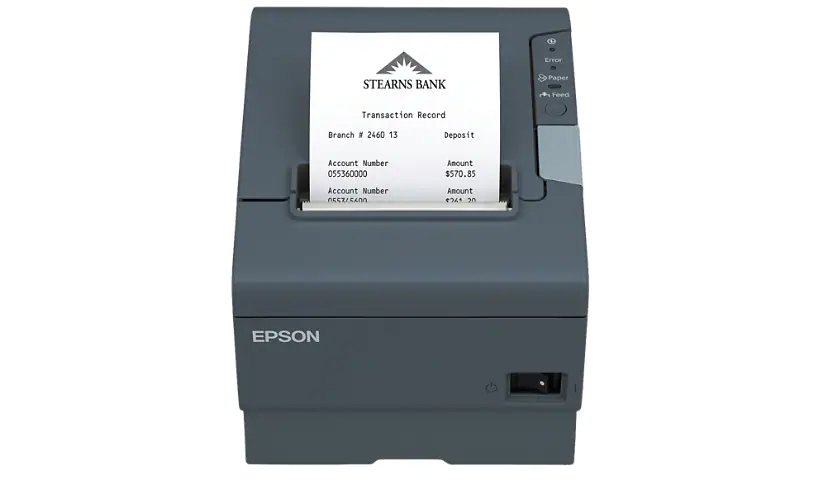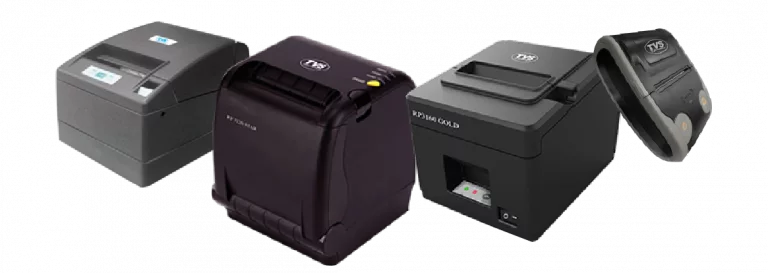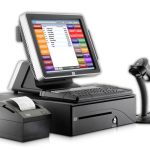- December 13, 2022
- Posted by: simba001
- Categories: Benefits of POS, General

A thermal printer is a type of printer that uses a heated thermal printhead pressed against a medium to produce black text or images. The heated printhead either activates special chemically treated paper (called thermal paper) or transfers solid ink from a ribbon and bonds it to the medium, depending on the type of thermal printer. They are commonly used in producing labels, receipts, barcodes, ID badges and many more applications across a vast number of industries.
 How Does a Thermal Printer Work?
How Does a Thermal Printer Work?
To understand how a thermal printer works, you first need to understand there are two types of thermal printing methods: thermal transfer printing and direct thermal printing.
Direct Thermal Printing
There is no ribbon, ink or toner involved with direct thermal printing. Instead, the printhead applies pressure and heat directly onto the surface of heat-sensitive thermal paper. The thermal paper reacts to the heat of the printhead, blackening when heated and producing an image or text.
Maintenance costs for direct thermal printers are low compared to other types of printers due to the fact no ink or toner is needed. One drawback, though, as mentioned above, is that your printed items may be prone to fading over time since thermal paper is particularly sensitive to heat and light. You may notice old receipts you have fade over time due to being printed on thermal paper. Additionally, you are only able to print in one color at a time when using this type of thermal printer, as the printing material itself is what determines the color.
What are Thermal Printers Used For?
 Thermal printers are used in a vast number of applications since they are energy-efficient, fast and portable. Here are some uses among many across different industries:
Thermal printers are used in a vast number of applications since they are energy-efficient, fast and portable. Here are some uses among many across different industries:
- Logistics and Transportation: shipping, receiving, inventory management, packing slips, return labels
- Manufacturing: labels for compliance, maintenance or parts management, quality assurance, progress tracking
- Healthcare: patient identification wristbands, lab or pharmacy sample labels, asset management
- Retail and Hospitality: price tags, POS or mobile POS receipts, guest cards or passes, ID badges, inventory management
- Government: supply chain labels, emergency management, ID badges, system administration
Thermal Printer Pros and Cons
Trying to decide if a thermal printer is worth it for you versus the other types of printers out there? Assess these thermal printer pros and cons.
Thermal Printer Pros
Here are some advantages of thermal printers to consider:
Thermal printers keep costs low as they do not rely on ink to print.
No ribbons, cartridges or other supplies need to be replaced to ensure continued use. The media alone is the only supply required to keep the printer running.
These compact printers are portable and convenient to use on the go.
A lightweight design makes them easy to take with you anywhere. Use them in the office or warehouse, at tradeshows and on demos.
Thermal printers offer quality results with high printing speeds.
Expect smudge-free results that tend to be highly legible and long lasting, and take milliseconds to print.
Thermal printers have few moving parts.
Since thermal printers have few moving parts, less things break and they are easy to maintain. Thermal printer printheads last about 10 years on average.
Thermal Printer Cons
Here’s what you should know about the negative side of thermal printers:
Thermal-printed labels may fade over time.
Direct sun exposure and heat can speed up this process, and even labels identifying boxes kept in storage may begin to fade over the years. Thermal paper must be stored at room temperature to last.
Thermal-printed labels may turn fully black when exposed to high heat.
This may cause you to lose important data or records if you haven’t saved the information elsewhere. It’s best if labels are kept at room temperature and not exposed to any heat, moisture or sunlight.
Direct thermal printing uses only one color at a time.
Black printing tends to be the most common, while other colors like red may be available when buying replacement labels or paper. Thermal transfer printers allow for more colors and different print media.
Thermal printers cost more than your average inkjet printer.
Thermal printers average about $300-400 USD but industrial thermal printers can get into the thousands. Also their specialized parts are expensive to replace and the printhead can be damaged due to excess heat.
At SimbaPOS, we provide Quality and Affordable Thermal Receipt Printers in Kenya. Check out our website for more or visit our offices for a demo.

 How Does a Thermal Printer Work?
How Does a Thermal Printer Work?



